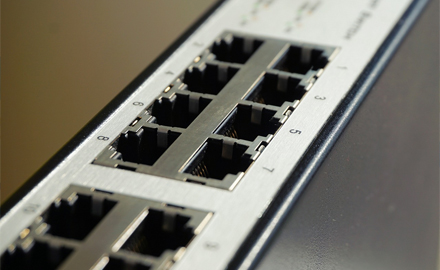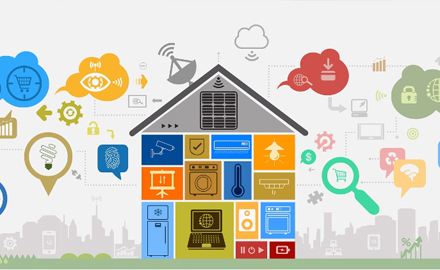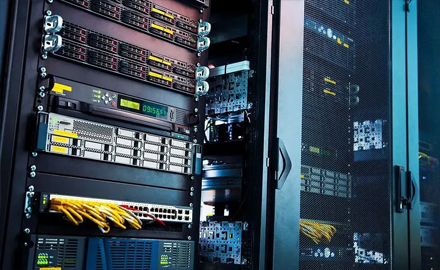The Market Economy of WiFi 6 is Worth Up to $500 Billion
Views : 700
Update time : 2022-12-21 09:47:16
WiFi as a term for a non-cellular wireless Internet connection has been generally accepted for at least 20 years, and as more and more devices become "connected" such as smart sockets, TVs, audio systems, etc., the reliance on WiFi in the connected home is also increasing. Likewise, consumers are increasingly relying on the bandwidth of WiFi for bandwidth-intensive activities such as streaming video, videoconferencing during the COVID-19 pandemic, and the emerging "metaverse."
Quantifying the Value of WiFi
From an economic standpoint, the convenience of WiFi features and functionality is very valuable to users. For example, the WiFi Alliance's February 2021 "The Economic Value of WiFi: A Global Perspective (2021-2025)" estimates that the global economic value of WiFi will be $3.3 trillion in 2021, increasing to $4.88 trillion by 2025, About 30% of the economic value of this is attributed to the United States. Notably, the report estimates that the global value of WiFi 6 itself will grow nearly tenfold from $57.9 billion in 2021 to $527.5 billion in 2025.
The Wi-Fi Alliance analysis identified drivers of the economic value of Wi-Fi to different stakeholders, including: (1) free Wi-Fi in public spaces, especially in emerging countries without developed cellular or home Wi-Fi networks; Residential WiFi for connecting devices (such as “smart home” features, such as security systems) to access the Internet; (3) enterprise WiFi to support a large portion of enterprise broadband traffic and productivity improvements, especially IoT and AR/VR applications; (4) Revenue of Internet service providers and WiFi business providers who rely on WiFi rerouting; (5) Manufacturers of WiFi devices and devices, IoT networks, AR/VR solutions, and other WiFi ecosystem companies. In fact, the WiFi Alliance's analysis determined that "a country's economic development is directly related to the value of WiFi," as its country-by-country chart shows. However, the analysis noted that in some countries, there are varying degrees of correlation between the value of WiFi and economic development. In fact, WiFi is worth more in some developing countries than in some developed economies because of the lack of developed cellular infrastructure and higher cellular costs in emerging countries, and the digital divide is wider in emerging countries and free public WiFi narrows the digital divide.
WiFi 6 Will Continue the Trend of Sharply Increasing Value of WiFi
Looking ahead, the WiFi Alliance determined that WiFi 6 will have an "accelerating effect" on the economic value of WiFi in the United States. In fact, the analysis estimates that the economic value of WiFi 6 in the U.S. will increase more than tenfold, from $16 billion in 2021 to $187.4 billion in 2025. The WiFi Alliance predicts that from 2021 to 2025, similar trends will follow in other countries around the world, including the United Kingdom (from $1.9 billion to $10.7 billion), France (from $1.3 billion to $9 billion), Germany (19 billion to US$15.3 billion), Spain (US$600 million to US$4.5 billion), Poland (US$200 million to US$5.7 billion), Japan (US$5.4 billion to US$28.7 billion), South Korea (US$2.1 billion increased to US$13.4 billion), etc.
The COVID-19 pandemic has had a major impact on WiFi usage and value, and even if the world resumes some pre-pandemic activities, lessons learned and changed social behavior during the pandemic may have implications for future WiFi reliance. The Wi-Fi Alliance's economic analysis notes that while GDPs in major countries around the world have contracted during the pandemic due to shutdowns and supply chain issues (the Wi-Fi Alliance cites IMF research that pre-pandemic US GDP growth in 2020 was 1.90%, compared to -4.30% post-pandemic growth in 2020), but global reliance on WiFi has increased as remote work and increased video consumption displace in-person workplaces and events. For example, during in-person meetings and events, individuals are more likely to use cellular networks as they move from place to place, while individuals confined to their homes have less mobility, encouraging Internet device users to rely more on WiFi access point. Likewise, while many meetings and discussions were held face-to-face prior to the COVID-19 pandemic, a greater percentage of meetings were hosted on videoconferencing platforms, requiring high-speed and high-bandwidth connections for instant, high-volume video transmission.
In terms of numbers, the WiFi Alliance (citing Opensignal) estimates that in the United States, the country with the most adoption and use of WiFi in the world, the communication time of wireless users using WiFi increased from 56.2% to 59.9% in less than a year. As a result of this significant growth, reliance on cellular and WiFi connectivity has increased and is likely to continue to increase. So even as the world is taking steps to return to pre-pandemic levels, these trends that may have been accelerated by the pandemic still show that WiFi 6 is becoming increasingly valuable.
Looking Ahead to the Impact of WiFi 6
WiFi 6 is expected to unlock the enormous value of existing WiFi and accelerate its value, usage and integration globally. Therefore, for companies in the WiFi 6 space, it could become an important driver of global economic value. As mentioned above, the relatively small number of companies driving innovation in WiFi 6 will be important beneficiaries of the value of WiFi 6, because standard essential patents will inevitably be violated by implementers of WiFi 6.
 CIOE2023: Pioneering the Future of Intelligent Communication with eNet
CIOE2023: Pioneering the Future of Intelligent Communication with eNet
 eNet GPON OLT Basics and Configuration
eNet GPON OLT Basics and Configuration
 What is FTTH? How Does it Work?
What is FTTH? How Does it Work?
 Application of Optical Transceiver Module in OLT
Application of Optical Transceiver Module in OLT